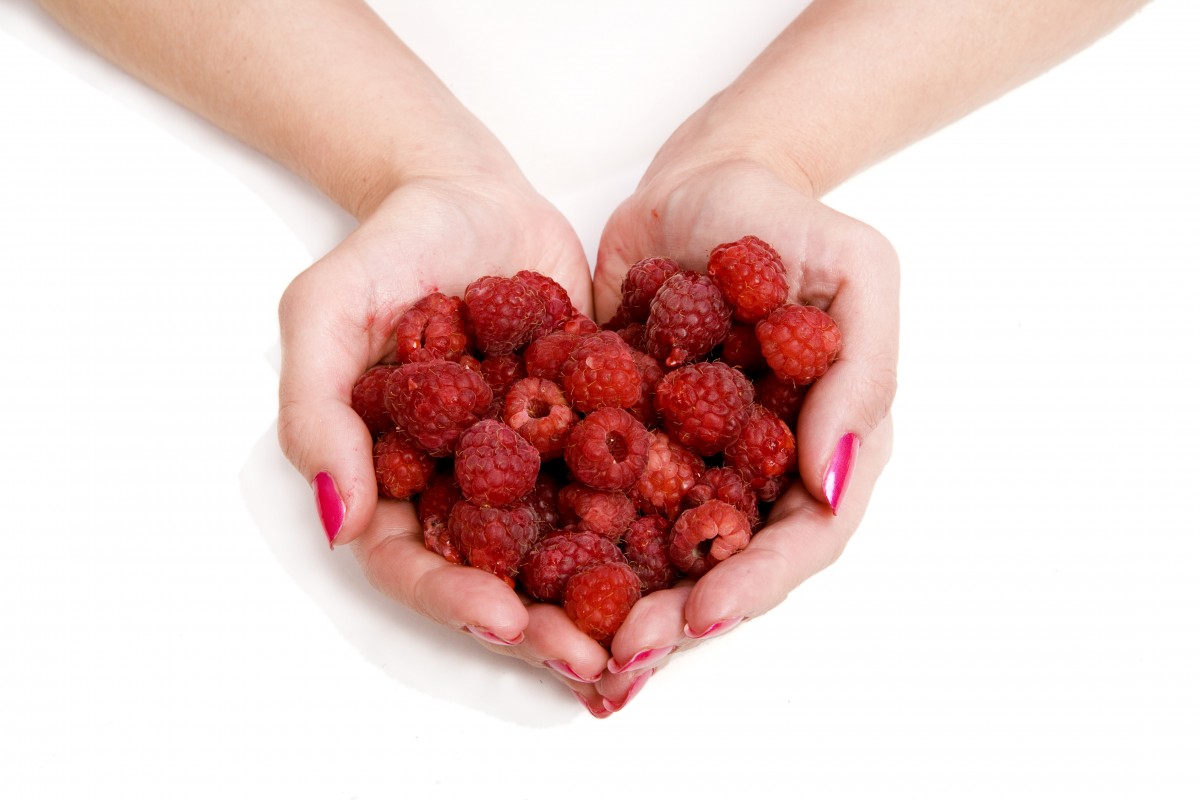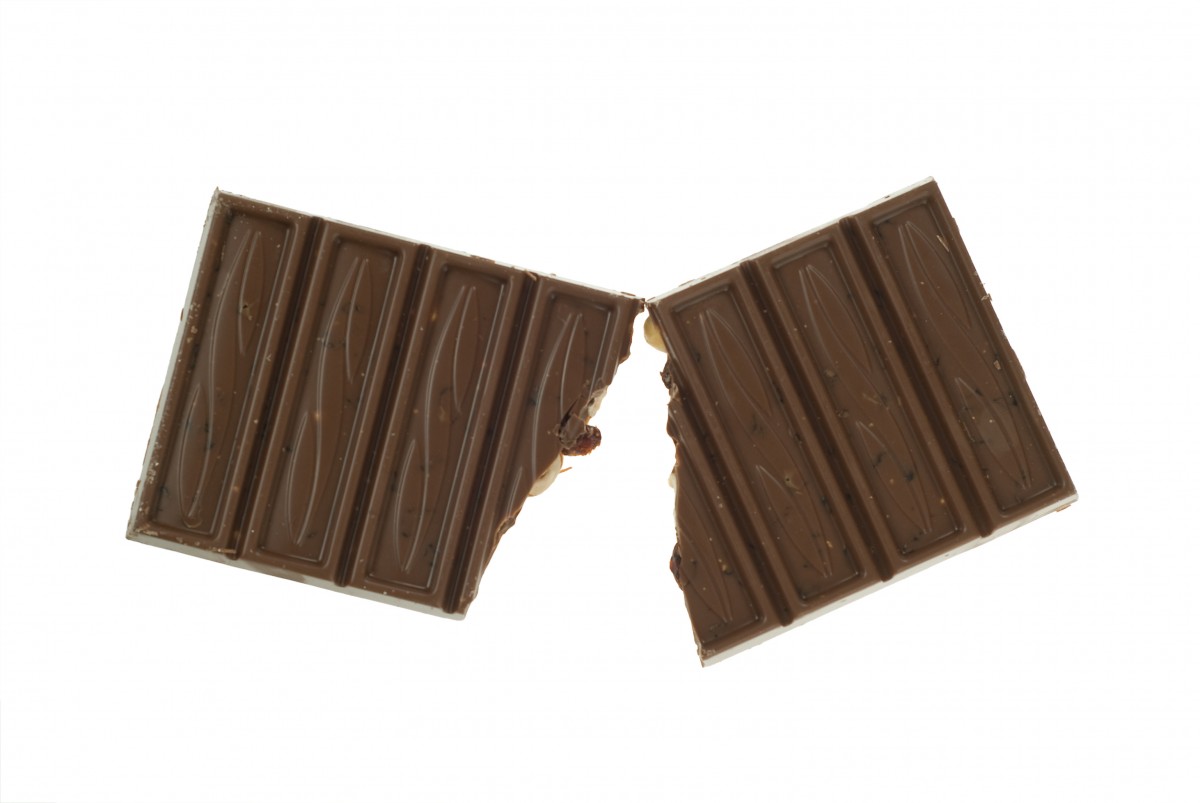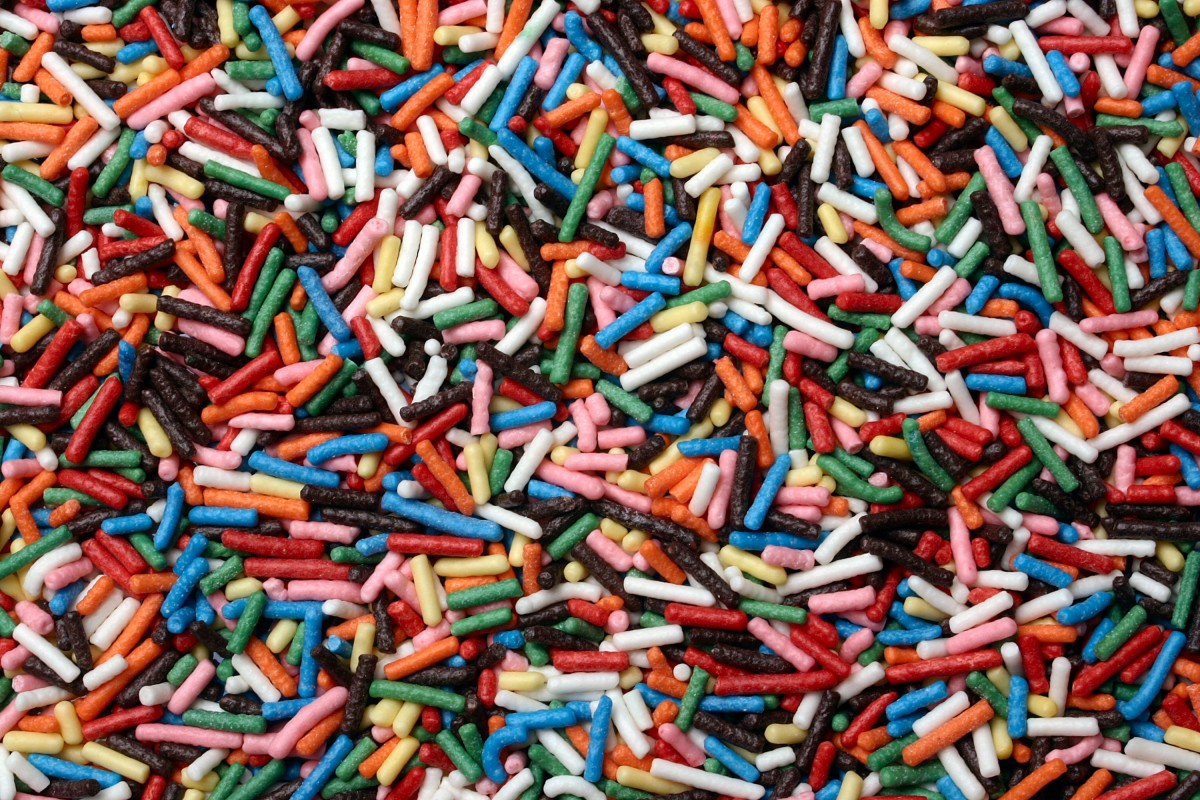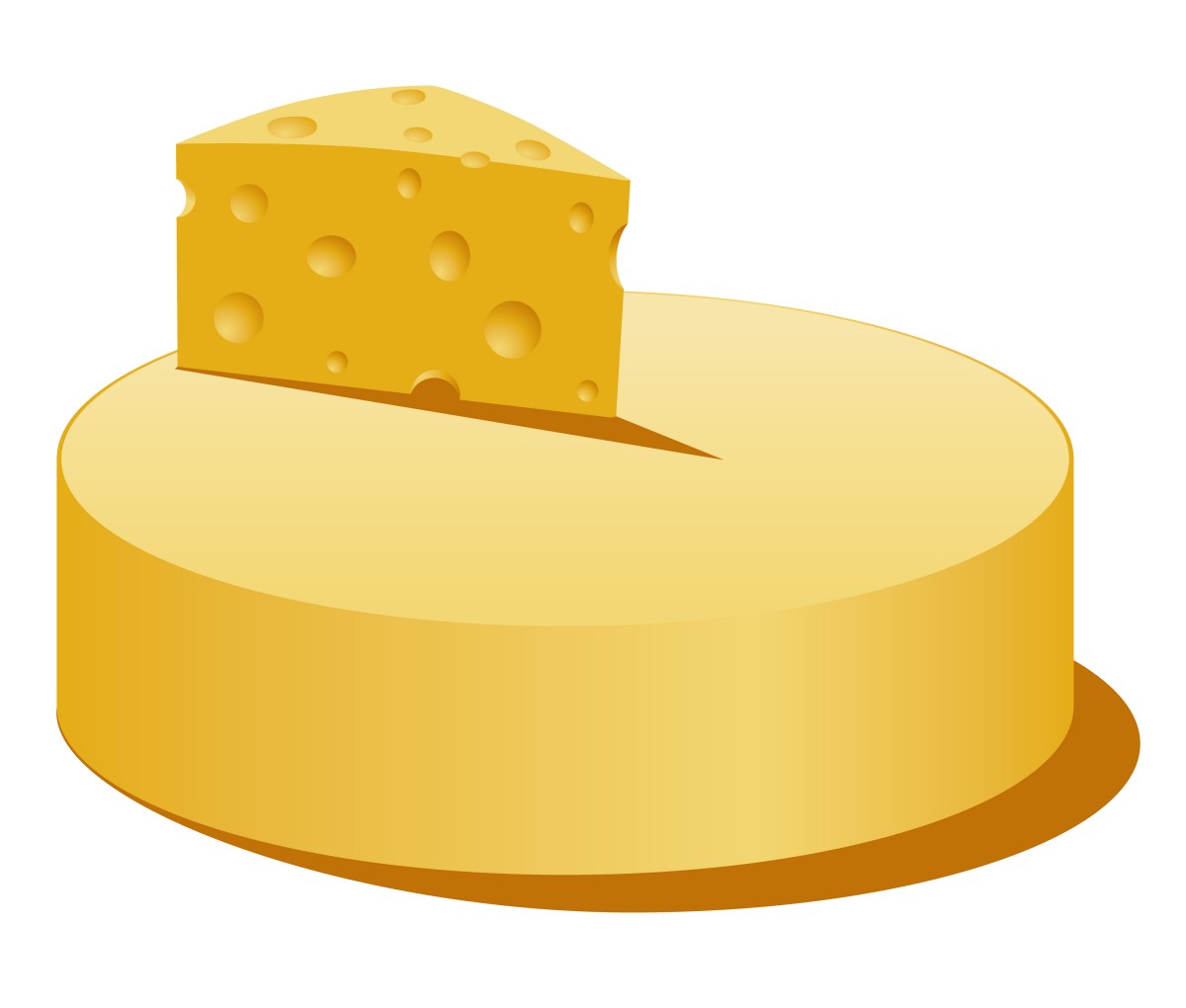
With robotics ingratiating itself into more aspects of our lives, we are inching closer and closer to the Singularity virtually every day. When it comes, I’m glad that it will at least be delicious: A team of four-armed robots, designed and built by Fieldwork Robotics, has cracked the problem of robotic raspberry picking. The robots are currently roving the fields of Portugal, executing the remarkably difficult task of picking the tiny, delicate fruits from different heights on each raspberry bush, working to stock British supermarkets like Tesco and Sainsbury’s. The Guardian lays it all out.
“‘We are making real progress in the development of our harvesting robots,’ said Rui Andres, Fieldwork’s chief executive. ‘Raspberries are very sensitive so we have had to develop technology that can apply enough pressure to release the fruit from the stem without damaging it. At the same time, our sensors are now so advanced that they can tell if the fruit is ready to be harvested or not, meaning what can be sold is all that is picked.’
He told the Guardian the robots were picking 1kg of fruit an hour, with the company working to ramp this up to more than 4kg an hour. The firm is aiming to have a robot picking 25,000 raspberries a day, compared with 15,000 for a human working an eight-hour shift.”
There’s a lot to be said for the efficiency of these bots, though the usual “freeing humans from drudgery” note is tempered by the fact that UK-based farmers are experiencing a shortage of international workers altogether (Brexit, anyone?). Fieldwork’s representatives insist the robots can work alongside human pickers, to “ensure gaps are filled,” and not to replace them completely. Only time will tell if the raspberry robots can be deployed as a fully automated harvesting force – and what it truly means for labour regulations in the now-isolated UK. Sometimes the only bright spot one can count on in life is a bowl full of granola with a few berries on top. However it shakes out, at least we’re blessed to have access to those little bites of sunshine!
The Japanese are known for their flair for design – especially for food-related items, which they often turn into complete experiences in themselves. Contemplating the perfection that is opening a Ramune bottle, or the long and storied history of bento is an exercise in a cultural respect for food we don’t often see in North America.
Add to the list of delicious Japanese inventions the humble Kikkoman soy sauce decanter, that (on our shores at least) is most often seen gracing a sushi restaurant table. Originally created by Kenji Ekuan in 1961, the perfectly balanced sloping glass bottle with the distinctive bi-spouted red cap is so revered by the design field that MoMA has it in their collection. Ekuan’s decanter was so ideal for its purpose that it’s been used continually for sixty years, with no improvements needed – until last month.
glass bottle with the distinctive bi-spouted red cap is so revered by the design field that MoMA has it in their collection. Ekuan’s decanter was so ideal for its purpose that it’s been used continually for sixty years, with no improvements needed – until last month.
Matthew Clark of Odachi Design in Los Angeles has 3D printed a prototype of a new soy sauce lid that addresses what he sees as the chief flaw in the original design: That it leaves the soy sauce inside open to the air and, therefore, flavour-robbing oxidization. Said Clark:
“‘Soy sauce’s greatest enemy is oxygen. So, with my design, I harnessed the capabilities of 3D printing to integrate a gravity valve within the lid itself. This is achievable with 3D printing, but costly or much more difficult otherwise. The valve is printed within the top when it’s produced. This was created to effectively maintain the flavor and shelf-life. After every pour, the remaining liquid aids the seal.’”
Clark was careful to create a smart lid that respected Ekuan’s original look, making sure that it was, in the parlance, “plug compatible” with Kikkoman’s iconic bottles. The next step would be to ensure Kikkoman’s approval of this 21st century spin on a mid-century modern classic, and to try the smart lid out in food-safe plastics for mass production. I’d love to see one of these in action at my local sushi joint; both to witness two designers collaborate three generations apart, and to enjoy the freshest soy sauce ever. As the Japanese food and design ethos has proven time and again, it’s the simple things that matter!
I’ve always enjoyed flipping through a copy of the Guinness Book of World Records whenever I’ve come across one. (I’ve had great luck at garage sales and, w eirdly, medical professionals’ offices.) It’s humbling to consider the marvels we humans can accomplish — from memorizing decimals of pi (70,000, by Rajveer Meena), to growing the longest fingernails (8.65 metres, by Lee Redmond), to my personal favourite, achieving the Guinness World Record for the most Guinness World Records (over 700 since 1979, by Ashrita Furman).
eirdly, medical professionals’ offices.) It’s humbling to consider the marvels we humans can accomplish — from memorizing decimals of pi (70,000, by Rajveer Meena), to growing the longest fingernails (8.65 metres, by Lee Redmond), to my personal favourite, achieving the Guinness World Record for the most Guinness World Records (over 700 since 1979, by Ashrita Furman).
I’d resigned myself to never having the time or the athletic skill to rack up a Guinness Record myself. But that was before I read this charming account of the quest for the greatest number of M&Ms candies stacked on top of each other. I was not prepared for the current record: a whopping seven.
“Guinness World Records posted a video of the achievement on Instagram last week — and with seven candies, it looks really difficult. [Record holder Ibrahim] Sadeq wears special finger gloves and needs plenty of effort to steady the final stack. He’s also an accomplished stacker in general: Sadeq is co-holder of the world record for Most Balanced Eggs on the Back of the Hand. (It’s 18 eggs.) […]
So what was Sadeq’s trick to get to seven? ‘I am using a mix of mind and body focus but people usually define it as a gravity defying act,’ Sadeq, who says he’s been stacking things for six years, told Guinness World Records. ‘I could possibly balance anything, but it gets really tough with light objects or liquids.’”
The record for stacked M&Ms was four back in 2016, and in the past 15 months alone the record was beaten three separate times, with Sadeq ending up on top. For now — I’m tempted to try for this bizarrely accessible-sounding record myself! I’m sure it’s more frustrating than it looks though; I may benefit more from the repeated, zen-like encounters with failure that I’m certain will result. Either way, this is a case of sometimes it pays to play with your food!

We’ve got a deep, dark (chocolately) dive this week, into the world of 3D printing food. We’ve looked at printed meat in this space before, but this news is decidedly sweeter: A team from the University of Amsterdam has devised a method of 3D printing chocolate in forms that maximize its “snap factor” — a crispness of mouthfeel that is the hallmark of higher quality chocolate. The process is intensely engineered, as Andrew Liszewski of Gizmodo writes.
“Melted chocolate that had been tempered to reach the stage where phase V crystals form was loaded into syringes that had to be kept at 90-degrees Fahrenheit while the printer built up structures layer by layer. But maintaining that temperature proved to be a challenge, requiring constant recalibration to account for the chocolate thickening over time. […]
The results were shared in a recently published paper, ‘Edible mechanical metamaterials with designed fracture for mouthfeel control,’ in the journal Soft Matter. They confirmed what the researchers speculated: the perceived quality and enjoyment of eating chocolate could be improved by increasing the number of cracks experienced while biting into a piece through S-shaped structures of increasing complexity. The researchers also found the experience could be improved by creating chocolate with anisotropic structures that alter the resistance felt during the bite through shapes and patterns that shear and break with force applied in specific directions.”
Wags in the Gizmodo comments are sounding off about how gross they find “crispy” chocolate as a concept, but I chalk that up to the American obsession with caramel and creamy peanut butter in their candy bars. Try an Aero or (the world’s best chocolate bar and I will die on this hill) a Twirl bar, and I think you’ll know what these researchers are talking about!
This technology would be a boon for folks with low tasting ability, or anyone who prefers a bit of texture to jazz up their snacks. It could also be applied to (wait for it) 3D printed meat, giving it a more accurate texture by laying down contrasting “grains.” It’s possible we could have a whole meal’s worth of printed food available to us in the near future — tasty food to boot. I for one welcome our new dessert-providing robot overlords!
From a second chance for single-use chopsticks, we pivot to a high-value pair you may want to keep forever: Japan’s Meiji University and the food and beverage company Kirin have collaborated on the creation of chopsticks that can help eaters reduce their sodium intake, through the power of electricity!
The futuristic utensils are attached to a microcomputer worn on the diner’s wrist. They emit a tiny electrical current that creates an artificial salty taste in the mouth of the wearer. How this is done is some pretty nifty science.
“The chopsticks use ‘very weak electricity – not enough to affect the human body – to adjust the function of ions such as sodium chloride and sodium glutamate to change the perception of taste by making food seem to taste stronger or weaker, Kirin said in a statement.
[Prof. Homei] Miyashita and Kirin said clinical tests on people who follow a low-sodium diet had confirmed that the device enhances the salty taste of low-sodium food by about 1.5 times. They said participants given reduced-salt miso soup had commented on the improved ‘richness, sweetness and overall tastiness’ of the dish.“
As someone who makes condiments for a living, I know firsthand how important salt is in a dish. These chopsticks would be a particular godsend for those with medical conditions that prevent them from consuming actual salt – an especially miserable diet. (Though we could all do with a bit of sodium awareness, if not reduction) The Meiji/Kirin team plans to refine the prototype and start rolling out sets of chopsticks to consumers next year. In particular, it’ll be interesting to see how a larger salt-loving populace like that of Japan finds these. I’d love to try a pair myself!
f, in some sort of creative thought experiment, I had to assign personality quirks to vegetables, I’d give “talkative” to carrots, or possibly broccoli. Never in a million years would I have considered mushrooms to be chatty, but recent research points to fungi as potentially being the “fun guy” you’d want at a party.
Professor Adam Adamatzky of the University of West England has mathematically analyzed the patterns of electrical impulses different types of fungi send to each other. In his research, published recently in Royal Society Open Science, Adamatzky studied the pulses sent between five different groups of mushrooms: Split gill, ghost, caterpillar, and the ever-delicious enoki. He asserts that the patterns he observed are similar to those found in human speech, and that mushrooms might have a vocabulary of up to 50 “words,” that they possibly use to communicate basic information to each other, through a network of mycelium made up of tendrils called hyphae.
“The most likely reasons for these waves of electrical activity are to maintain the fungi’s integrity – analogous to wolves howling to maintain the integrity of the pack – or to report newly discovered sources of attractants and repellants to other parts of their mycelia, Adamtzky suggested.
‘There is also another option – they are saying nothing,’ he said. ‘Propagating mycelium tips are electrically charged, and, therefore, when the charged tips pass in a pair of differential electrodes, a spike in the potential difference is recorded.’
Whatever these ‘spiking events’ represent, they do not appear to be random, he added.”
Maybe don’t send those party invites out quite yet: Though my imagination is already firing like so many propagating mycelium tips, Adamatzky and his colleagues in the field acknowledge this is early days. A lot more research and experimentation needs to be done before a portobello gets invited on Fresh Air. (For instance, this sort of pulsing behaviour has been seen in fungi before, where it indicated simple physical growth.) I for one hope Adamatzky and team get lots of funding and answers soon: I have a paper bag full of criminis sitting placidly in my fridge, and I fear they are planning something!
Readers of this newsletter will be familiar with the scourge of palm oil, which we looked at in a previous installment. Palm oil is a creamy, high-smoke-point fat that can be found in a staggering number of prepared foods, cosmetics, and industrial products. Its value has led to the deforestation of large swathes of Malaysia and Indonesia in favour of tracts oil palm trees, destroying the natural habitat of critically endangered orangutans. In addition, child labour is often used in the farming and harvesting of this oil.
As dirty as the palm oil industry is, we’ve all seen how hard it is to uncouple capitalism from cheap ways of doing things. That’s why this recent news from Singapore’s Nanyang Technological University and Malaysia’s University of Malay is so exciting: They’re investigating harvesting oil from a common micro-algae to replace – and health-wise, even surpass – palm oil. The fascinating process has been detailed in a recent Journal of Applied Phycology
“For the study, the researchers added pyruvic acid – which is an organic acid present in all living cells – to a solution consisting of the micro-algae and a liquid growth medium. The mixture was then exposed to ultraviolet light, to stimulate photosynthesis. After 14 days, the algae was removed, washed, dried and then treated with methanol. The latter treatment was required in order to break the bonds between the algae proteins and the oils produced by those proteins during the photosynthesis process.
The harvested oil is said to possess qualities similar to those of palm oil, although it contains significantly fewer saturated fatty acids, offset by a larger percentage of heart-healthy polyunsaturated fatty acids. In the present version of the technology, 160 grams of algae would be required to produce enough oil to manufacture a 100-gram chocolate bar.”
To boost the sustainability factor, the team notes they are able to derive the pyruvic acid which kick-starts the procedure from food waste, like fruit peels and soybean pulp. They also envision large scale production that uses sunlight as the required UV light source – one step away from literal farming itself!
This innovation is so low cost, I really hope it catches on. Palm oil is one of those things that we can afford to have “go extinct” – I’d rather have my cake and orangutans too.

It seems the banning of American-made sprinkles in the UK might hurt the folks at Get Baked (of the famous sprinkle-bereft raspberry glazed doughnut cookie more than we originally thought*: Taste has made a solid case that sprinkles are having quite a cultural moment. In an age when everything needs to be meme-able, a sowing of impressive sprinkles can make a home-baked cake shine more than tricky-to-master piped frosting. But where did this very 21st-century trend in very tiny confections come from?
[…Many] forms of sprinkles were available throughout 19th-century America, as they were in Europe and elsewhere. Some versions may have been inspired bymukhwas, a South Asian sweet snack of candy-coated fennel, anise, and other seeds (only these served a nutritional purpose, to aid digestion and freshen breath after a meal). For instance, the Dutch brand De Ruijter sells candied anise seeds under the trademarked name “muisjes” (meaning “mice”), among other varieties of little candy toppings, including hagelslag (meaning “hailstorm”).
There’s a Dutch tradition of new parents offering pink-and-white or blue-and-white muisjes on biscuits to friends and family to celebrate a birth, says Dutch food writer Dorothy Porker. As for the long, skinny, sprinkle-esque hagelslag – and often chocolate hagelslag, which, unlike in the United States, must contain at least 32 percent cocoa – there is no need for a special celebration. It’s a common feature of breakfast and lunch, where it’s sprinkled on bread; a canister of the stuff is often set on tables next to salt and pepper.”
From early beginnings to the Great NYC Cupcake Wave at the dawn of the century, sprinkles have been the little candies that could. I wonder if Instagram and TikTok will further serve sprinkles’ proliferation – or if we’ll be seeing a bust anytime soon?
* But don’t worry: All is not lost for the folks at Get Baked! In researching this post, I checked in with their – delightfully profane – social media. Head baker Rich Myers has parlayed the lemons West Yorkshire Trading Standards gave him into lemonade flavoured sprinkles, by founding his own %$#! sprinkle company. Dubbed Expen$ive Sprinkles (I bet in an even combo of rage and marketing genius), the company only debuted last month. The sprinkles look stunning, with rich colours and a satisfyingly round heft. I hope they’ll be able to ship to Canada at some point – I’d love to do a taste test opposite the dreaded banned sprinkles here across the pond!

The science of animal product alternatives has been making crazy strides in recent years. I remember a time when going veg meant sentencing yourself to a life of endless tofu and bulgur salads. But today’s offerings, like 3D printed vegan “meat” and alt-milks galore, are getting increasingly tough to tell apart from the real thing – even for curious carnivores.
A U.K. company called Better Dairy is now taking that mimicry to the next level: Instead of just approximating taste and mouthfeel, they say their proposed yeast-based cheese alternative is “molecularly identical” to actual dairy cheese. The crew’s main motivation is to reduce the heavy burden that dairy farming has on our natural environment. Though still in the R&D phase, the company has seen a recent influx of funding, to get them closer to replicating complex hard cheeses. But how does this delicious science work?
yeast-based cheese alternative is “molecularly identical” to actual dairy cheese. The crew’s main motivation is to reduce the heavy burden that dairy farming has on our natural environment. Though still in the R&D phase, the company has seen a recent influx of funding, to get them closer to replicating complex hard cheeses. But how does this delicious science work?
“Although plant-based alternatives are gaining popularity, [Better Dairy CEO Jevan] Nagarajah argues that they are not a complete solution, often lacking in flavour, texture and nutritional profile. And while they might be able to capture market share, he doesn’t believe plant-based alternatives to dairy will be successful in ‘radically’ disrupting the existing $700 billion dairy industry and supply chain. That’s where Better Dairy comes in.
‘We are instead using yeast fermentation and biology to produce products that are molecularly identical to traditional dairy,’ he explains. ‘We follow a process very similar to beer brewing but the end result in our case is large vats of dairy instead of beer. This production process, while seemingly futuristic, is actually already being used to produce several enzymes for food production, for example rennet, as well as to produce numerous medical products such as insulin, so we are just building on this.’”
The fact this cheese would have the same look, flavour, nutrition, and lactose levels as cow milk cheese, just… minus the cow, is simultaneously heartening and mind-blowing. I consider a product like this as similar to, say, plant-based meat alternatives being rolled out at fast food places: That is, not something established veg folks might be interested in, but there to convert people who like the meat to a more sustainable diet. The technology already seems like Star Trek to me; I wonder what the next 10 years will look like for the industry – and our plates!
Like anyone who has ordered takeout sushi or Chinese food even once in their lives, I have a kitchen drawer full of the disposable chopsticks that always come with. Besides using one in a pinch as a shim or plant stake, I’ve never seriously thought about their reuse value. And, since they’re usually manufactured out of highly sustainable bamboo, I don’t have that pang of regret when I throw them out after polishing off that leftover cashew chicken. But it seems I’ve been sleeping on an untapped resource! In a recent profile, the always-satisfying Gastro Obscura introduced me to decor and furniture startup ChopValue. The Vancouver-based company transforms 350,000 used bamboo chopsticks from local restaurants each week and processes them into sleek items like shelves, cutting boards, and even office desks.
sleeping on an untapped resource! In a recent profile, the always-satisfying Gastro Obscura introduced me to decor and furniture startup ChopValue. The Vancouver-based company transforms 350,000 used bamboo chopsticks from local restaurants each week and processes them into sleek items like shelves, cutting boards, and even office desks.
I admit my first question was about how they clean them; I definitely don’t want soy sauce residue lacing my breadboard. Author Diana Hubbell figuratively breaks it down (as ChopValue does literally):
“To remove any trace of food waste, the chopsticks are first coated in a water-based resin, then sterilized at 200 degrees Fahrenheit in a specialized oven for five hours. A hydraulic machine then breaks the wood down into a composite board, which is sanded, polished, and lacquered as necessary. ‘This material is then the core piece for everything from desks and table tops to home decor,’ [founder Felix] Böck says.”
Böck estimates that, since ChopValue’s inception in 2016, the company has prevented over 50 million pairs of chopsticks from ending up in landfills. In addition to those hefty moral points, they score design points as well: Their items look stylish and solid, with a gentle visual echo of their humble origins in the finish. I’m really impressed by this example of the circular economy in action. Now, let’s see if we can get on top of takeout-containers-as-purses, and plastic-forks-as-keychains, ASAP!